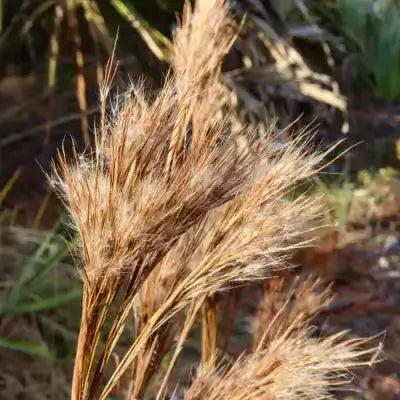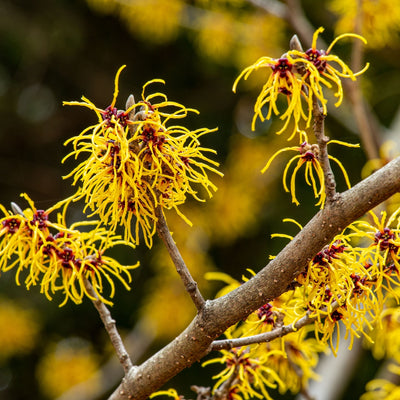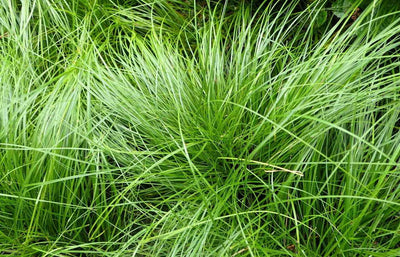Broom Sedge: An Ecological and Cultural Jewel in North America
Notable warm season perennial grass, Broom sedge, along with broom sedge bluestem and yellow sedge bluestem is widely and naturally found growing in the North America Southeastern region, and its scientifically acknowledged name is Andropogon virginicus. The cultural and ecological uses of this plant in its natural region strongly proves that it is of immense importance. The plant may not have the most attractive look and design, but it is responsible for a plethora of ecosystem supports, wherein providing nutrients, components for soil stabilization, and controlling wildlife and erosion, acting as a shield in more neglected regions. This post examines the connections, potential uses it has along with its culture and all the characteristics of broom sedge.
Features of Broom Sedge
Broom sedge is a warm season grass that has the ability to thrive in clumps. This grass species is a member of the poaceae family. Broom sedge is one of the most useful and versatile plants. It has the ability to grow in most soil types and withstand varying environmental conditions. It is outstandingly useful as the dominant, clumped growth form permits broom sedge to vigorously overtake all competing species, and this is especially seen when the area is disturbed, such as with old fields, roadsides, and derelict agricultural lands which are overgrown.

The plants’ inflorescence generally range in color from reddish brown to copper and are organized in one of a kind bristly whorls that look like a broom which is how the plant got its common name. It is commonly located in disturbed areas where it helps in the further degradation of the area. The plant's stiff leaves are roughly one foot long and the stems that grow unsupported to a height of 3 feet are classified as erect. These unbranched stems form a thick mat which is used as refuge by various species.
During the broom sedge's flowering stage in the late summer to early fall, broom sedge sprouts little, undistinguished flowers that produce seeds which, thanks to wind, are easily scattered. This along with the plants’ strength to survive adverse conditions is the reason the broom sedge is located in a number of places.
The Ecological Importance of Broom Sedge
Land managers may see broom sedge as a pesky plant for its ability to grow on disturbed terrain. However, broom sedge serves a number of important ecological functions. Broom sedge’s prolific growth offers habitat and sanctuary to an array of small mammals, birds, and insects. Sparrow and quail species foraging and nesting in broom sedge stands are plentiful. Because broom sedge’s seeds are a primary food source for a number of birds, its contribution to biodiversity and ecological fitness is significant. Broom sedge also has a profound impact on erosion control and soil stabilisation. Its extensive and fibrous root system conjoins soil particles, protecting the soil from wind and water erosion. Broom sedge is also useful on construction and agricultural sites where soil degradation and disturbance has occurred, because it helps to restore soil health.
Moreover, it helps in the Nutrient cycling and ecosystem succession of the ecosystem. Concentrated on the nutrient types, broom sedge acts like a sphagnum moss because they are both able to move and retain moisture, therefore It is one of the earliest types of plant species able to grow on a deteriorated site, helping to “green the desert”. In the later stages of ecosystem development, broom sedge gets replaced by other tall grasses, shrubs or even trees, increasing the complexity and variety of the ecosystem.
/filters:strip_exif()/assets/plants/plant_28114/users/plant_28114_user_1656_20210331003740.jpg)
Cultural Connections of Broom Sedge.
More specifically, broom sedge is one of the earliest other significant plants to crop in many rural areas, more particularly in the southeast part of the United States. In rural areas, this plant is used in the construction of structures, like roofs. Also, many agricultural people claim broom sedge to be the most important plant for stitching and weaving.
Broom sedge is one of the Mediterranean countries that is used for folk medicine. The power of broom sedge is believed to date from the time of the first indigenes and even early settlers in the southeastern part of the United States. Most times, people boiled the broom sedge roots and made a tea that cured fevers and illness. It has also been recorded that the stems of this plant were used to make poultices in order to battle deep cuts and infections on the skin.
Although medicine today has gotten increasingly away from folk remedies, some cultures still recognize broom sedge as medicine. Many people still use broom sedge for its believed healing abilities. Many other people recognize it for its historical and cultural symbolism. The plant is still very important for the area, and there are already some attempts made to save it culturally for the people to come.
Other Potential Uses of Broom Sedge
Broom sedge’s cultural significance and its ecosystem are not the only important aspects. It also has some value to modern agriculture and land management. In agricultural fields, it is often considered a weed, but its ability to prosper in poor soils and very harsh conditions has made it beneficial for soil improvement and erosion control. In some agroforestry systems, broom sedge is useful in hedgerows or buffer strips to help with soil erosion control and offer a habitat for helpful insects.
There also may be some newly discovered industrial and medicinal usages as a result of the uninterrupted ongoing studies on the chemical compositions of broom sedge. Certain compounds are known to be in the plant, which may lead to the development of new pharmaceuticals and biofuels as well as bio- and phytoremediation processes. These approaches would create new economic development as well as sustainable utilization of the broom sedge.
Also, broom sedge can shift from one habitat to another, and this ability might be a plus when it comes to doing broom sedge-related ecological restoration projects. Being a pioneer species, broom sedge could start restoring degraded lands, enhancing soil, and aiding the growth of other plants, and it may also be crucial to restoring ecosystems, which may help alleviate habitat loss and soil erosion.
Apart from broom sedge, what other plants can be considered as its relatives?
Broom sedge is a cornerstone of the ecosystem and, as such, coexists with other relative species. Ribbon Grass (Phalaris arundinacea) is one of the dominant plants occupying disturbed terrains. It is renowned for its soil erosion control and soil stabilizing abilities. Both broom sedge and ribbon grass are ecologically sympathetic, as they provide cover for various types of organisms and improve the soil.
Also, another warm season grass, broom sedge’s ecological partner, Switchgrass (Panicum virgatum), is frequently seen in prairie regions. Including broom sedge, switchgrass helps control soil erosion and is a vital forage crop for grazing animals. Both of them, in addition, have possible uses in the field of bioenergy due to their high concentration of cellulose.
Discover More with TN Nursery
While you learn about broom sedge, TN Nursery also has an online store with many different types of plants that you can use for your garden or landscape. No matter if you are looking for native grasses, wildflowers or shrubs, TN Nursery has the right plants for you.
FAQs
What is broomsedge good for?
Bain and Woodwell (2008) and USDA (2008) identified other important motives for the presence of the Broom Sedge, including stabilization of soil, habitat for small birds and mammals, wildlife cover, and potential forage for livestock. Crafts in the southeastern parts of the United States using Broom Sedge stems, and its cultural roots in the region, also demonstrate other uses of the plant.
How do you get rid of broom sedge?
A mechanical approach using mowing and burning are the best methods for broom sedge control, especially for invading monocultures, while in other fields, the use of herbicides must be cautiously applied. Broom sedge control is also effective using the promotion of other aggressive plants in the area.
Does broomsedge spread?
Broom sedge is infamous for the ease with which it spreads, and, in particular, its capacity to be wind dispersed. While this can be an advantage in frequently disturbed habitats, it can be seen as a disadvantage in undisturbed habitats, as it will easily come to dominate the area.
Will cattle eat broomsedge?
Yes, broom sedge is a plant that is at times consumed by cattle, but it is not their top choice. This plant is extremely useful when other grasses or plants are not thriving. This is primarily the case if plants are in abundance. Grasses or other plants which are more liked by animals might not always be available.
Is broom toxic to humans?
Humans are not at all poisoned by broom sedge. They do, however, become victims to skin rash by a section of the population as a result of the coarse wiry leaves and thick stems. It is always good to use hand gloves when engaging in the plant for longer durations.
What are the disadvantages of brome grass?
This plant has some disadvantages of which being it can be destructive in some scenarios which include being competitive with other plants in an ecological scene. This is also a situation that happens when grown in agricultural fields as it is able to diminish the crops by competing with them over resources. This plant also can be grown in abundance over a particular spot which becomes extremely difficult to control or manage.



